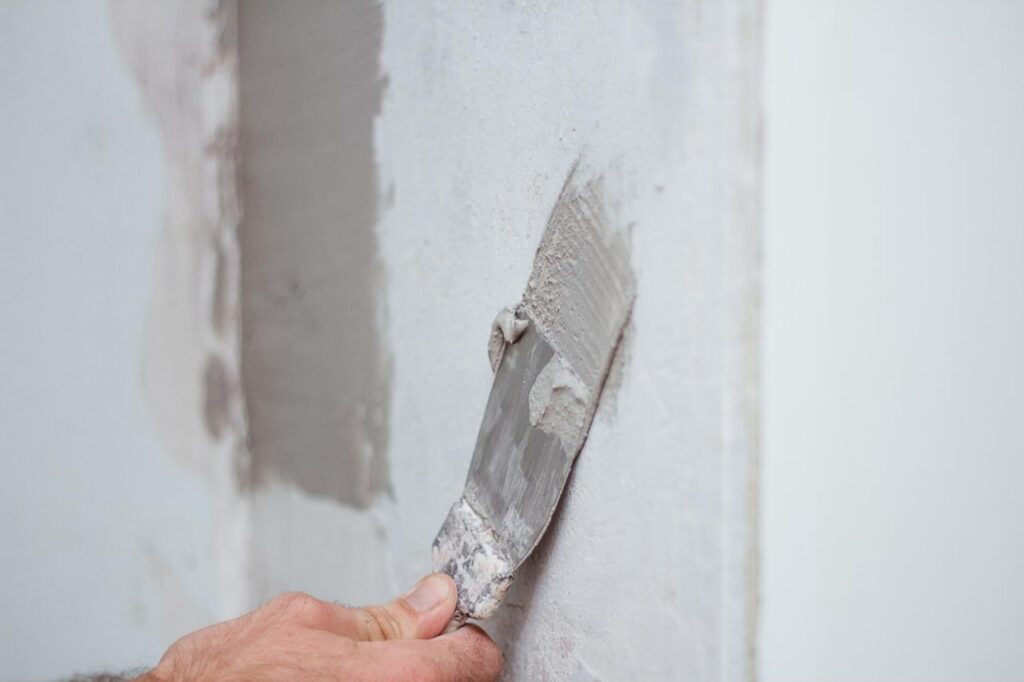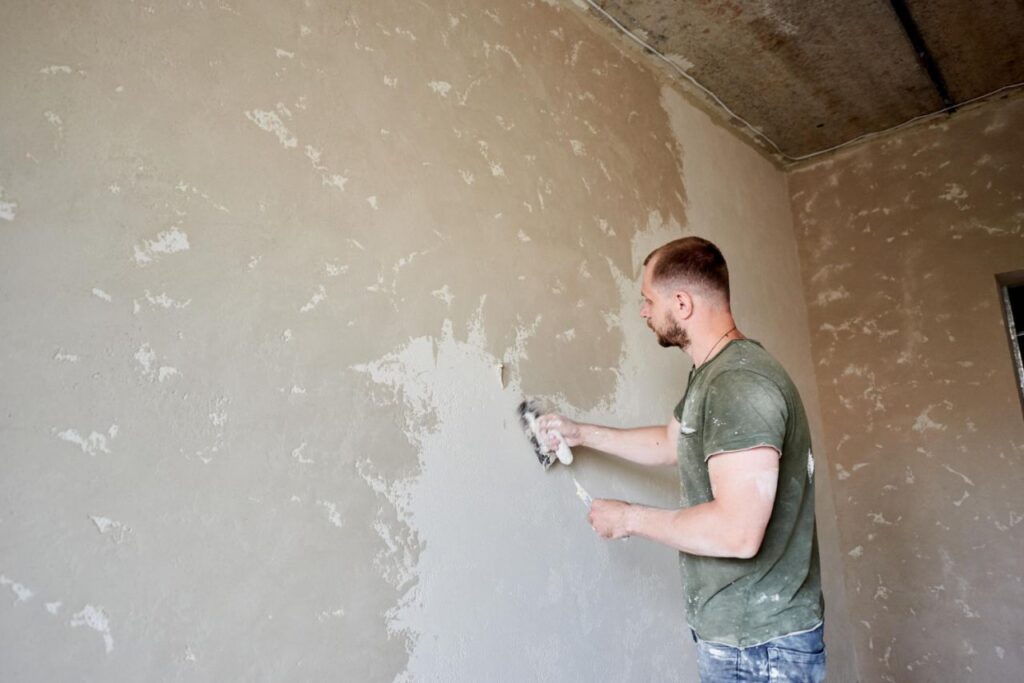Lime plaster has been a durable and eco-friendly building material for centuries.
Despite the rise of modern alternatives like gypsum and cement-based plasters, lime plaster remains a popular choice for both commercial and residential buildings due to its low maintenance, long-lasting resilience, and flexibility.
This article will provide essential information on lime plaster, its types, benefits, and challenges, helping you decide if it’s the right option for your next project.
Let’s get straight to the point.
Lime plaster is a durable, eco-friendly material used for centuries in building construction.
It’s made from lime, sand, and water, and there are two main types: non-hydraulic (slow-setting, breathable, flexible) and hydraulic (faster-setting, durable, and water-resistant).
Lime plaster prevents dampness, improves air quality, and offers long-lasting durability and thermal insulation.
It’s ideal for older buildings and eco-conscious projects but can be more expensive and labour-intensive to apply.
Challenges include slow setting times, potential shrinkage, and the need for skilled tradespeople, but its benefits often outweigh these drawbacks.
What Is Lime Plaster?
Lime plaster is a traditional mortar used for finishing interior walls and ceilings. Its history dates back thousands of years, and evidence of its use in ancient buildings exists.
Lime plaster is made from lime (derived from burning limestone, chalk, or seashells), sand, and water. Fibres such as animal hair are sometimes added to improve strength and adhesion.
The lime used in plaster is produced by heating calcium carbonate materials to form quicklime. When mixed with water, quicklime becomes slaked lime, ready for use in construction.
Types Of Lime Used In Plaster
Two primary types of lime are used in plaster: non-hydraulic lime and hydraulic lime. Understanding their differences is essential for choosing the right option for your project.
1. Non-Hydraulic Lime
Non-hydraulic lime, also known as air lime or slaked lime, is made by mixing quick lime with water. This type of lime sets through a slow process called carbonation, where it absorbs carbon dioxide from the air.
Key characteristics of non-hydraulic lime:
- Slow setting: It can take several months to cure fully.
- Breathability: This lime allows air to pass through, preventing moisture build-up and reducing the risk of dampness.
- Flexibility: Non-hydraulic lime is less prone to cracking than cement-based alternatives.
- Eco-friendly: It has a low environmental impact due to its ability to absorb carbon dioxide during the setting process.
However, non-hydraulic lime requires more time and labour, and the slow setting process may increase project costs.
2. Hydraulic Lime
Hydraulic lime is made from limestone that contains silica, clay, or other mineral impurities. When mixed with water, hydraulic lime undergoes a chemical reaction, allowing it to set much faster than non-hydraulic lime.
This makes it ideal for outdoor applications or areas exposed to moisture and weathering.
Key characteristics of hydraulic lime:
- Quick setting: Sets faster than non-hydraulic lime, making it more practical for certain projects.
- Water resistance: Provides greater durability in damp or exposed conditions.
- Variety of strengths: Hydraulic lime comes in different strengths, from ‘feeble’ (NHL 2) to ’eminent’ (NHL 5), depending on the amount of impurities in the limestone.
Hydraulic lime is stronger and more durable but less breathable and flexible than non-hydraulic lime.
Therefore, it is often used in modern construction and outdoor applications, while non-hydraulic lime is preferred for older or heritage buildings.
Advantages Of Lime Plaster
Lime plaster offers several benefits, making it a desirable option for restoration projects and new builds.
1. Breathability And Flexibility
Lime plaster is porous, allowing moisture to evaporate naturally. This property is important in preventing damp issues, especially in older buildings.
Unlike cement-based plasters, lime plaster’s flexibility helps it withstand structural movement without cracking.
2. Durability
Lime plaster becomes stronger over time as it reacts with carbon dioxide in the air. Proper care can last for decades, making it a cost-effective long-term solution.
3. Moisture Control
Lime plaster’s absorbent nature helps regulate moisture levels in a building, preventing condensation and mould growth. This makes it an excellent choice for damp-prone areas.
4. Eco-Friendliness
Lime plaster has a lower carbon footprint than modern plasters. It absorbs carbon dioxide during the curing process, helping to offset the emissions produced during manufacturing.
Additionally, lime plaster is fully recyclable and does not emit volatile organic compounds (VOCs), contributing to better indoor air quality.
5. Thermal Insulation
Lime plaster has good thermal insulation properties, thanks to the air trapped within its pores. This helps regulate indoor temperatures, making it a more comfortable material for cold and warm climates.
6. Aesthetic Appeal
Lime plaster has a unique, natural appearance that develops a subtle sheen over time. It can be finished in various textures and colours, allowing customisation to suit different design styles.
Disadvantages Of Lime Plaster
While lime plaster offers many advantages, it also has some drawbacks that must be considered.
1. Slow And Unpredictable Setting Time
Non-hydraulic lime plaster takes longer to set than other types of plaster, which can delay construction timelines. This slow curing process requires careful aftercare, such as keeping the plaster damp to prevent cracking.
2. Caustic Nature Of Non-Hydraulic Lime
Non-hydraulic lime is highly caustic when wet, with a pH around 12. If proper safety precautions are not taken, chemical burns can occur. Workers must wear protective clothing, gloves, and eyewear when handling lime plaster to avoid injury.
3. Shrinkage And Cracking
Lime plaster can shrink as it dries, especially if it needs to be applied correctly or dries too quickly. Surface cracks may appear if the plaster is not kept moist during curing.
Applying a mist of water to the surface can help minimise shrinkage, but it requires diligence during the early curing stages.
4. Labour-Intensive Application
Lime plastering is more labour-intensive than modern plastering methods. It requires multiple layers, precise mixing, and careful timing to achieve a smooth, durable finish.
This complexity can make it more expensive, especially if skilled tradespeople are in short supply.
5. High Initial Costs
Lime plaster can be more expensive upfront than other plaster options due to the cost of materials and the skilled labour required for its application.
However, its durability and low maintenance requirements can make it a more cost-effective choice over time.
When To Use Lime Plaster?
Lime plaster is especially suited for certain types of projects where its unique properties shine. These include:
- Older buildings: Lime plaster is ideal for restoring heritage properties, as it is compatible with traditional materials and construction techniques.
- Damp-prone areas: Its breathability makes it perfect for spaces where moisture control is a priority.
- Eco-conscious builds: Lime plaster’s low carbon footprint and recyclability make it a good choice for environmentally friendly construction projects.
However, if time, budget, or ease of use are significant concerns, modern plaster alternatives may be more suitable.
Conclusion
Lime plaster remains a highly valued material in construction due to its flexibility, durability, and environmental benefits.
It helps control moisture, improves indoor air quality, and provides excellent insulation, all while offering a timeless aesthetic that works in modern and traditional settings.
Though it can be more challenging to work with and requires skilled labour, its long-term benefits—like reduced maintenance and enhanced durability—make it a smart investment for those willing to embrace its unique properties.
Whether restoring an older building or creating a sustainable, breathable living space, lime plaster is a proven solution that has stood the test of time.
FAQs About Plastering
What Is The Application Process For Lime Plastering?
Lime plastering involves mixing lime, sand, and water to create a workable paste, which is then applied in layers onto prepared surfaces using traditional techniques such as floating and troweling.
How Long Does Lime Plaster Take To Dry And Cure?
Lime plaster typically dries through carbonation, which can take several weeks or months, depending on environmental conditions such as humidity and temperature.
Are There Any Considerations To Consider When Using Lime Plaster?
Lime plaster requires proper substrate preparation and adherence to specific application techniques to ensure optimal adhesion and performance. It’s also important to protect lime plaster from excessive moisture during curing.
Can Lime Plaster Be Painted Or Finished In Different Ways?
Yes, lime plaster can be painted with breathable mineral paints or finished with decorative techniques such as lime washing, which enhances its natural aesthetic and allows the walls to “breathe.”
Is Lime Plaster More Expensive Than Other Types Of Plaster?
Lime plaster may have a higher initial cost than gypsum or cement-based plasters. Still, its long-term durability and environmental benefits often justify the investment, especially in historic preservation or sustainable building projects.



